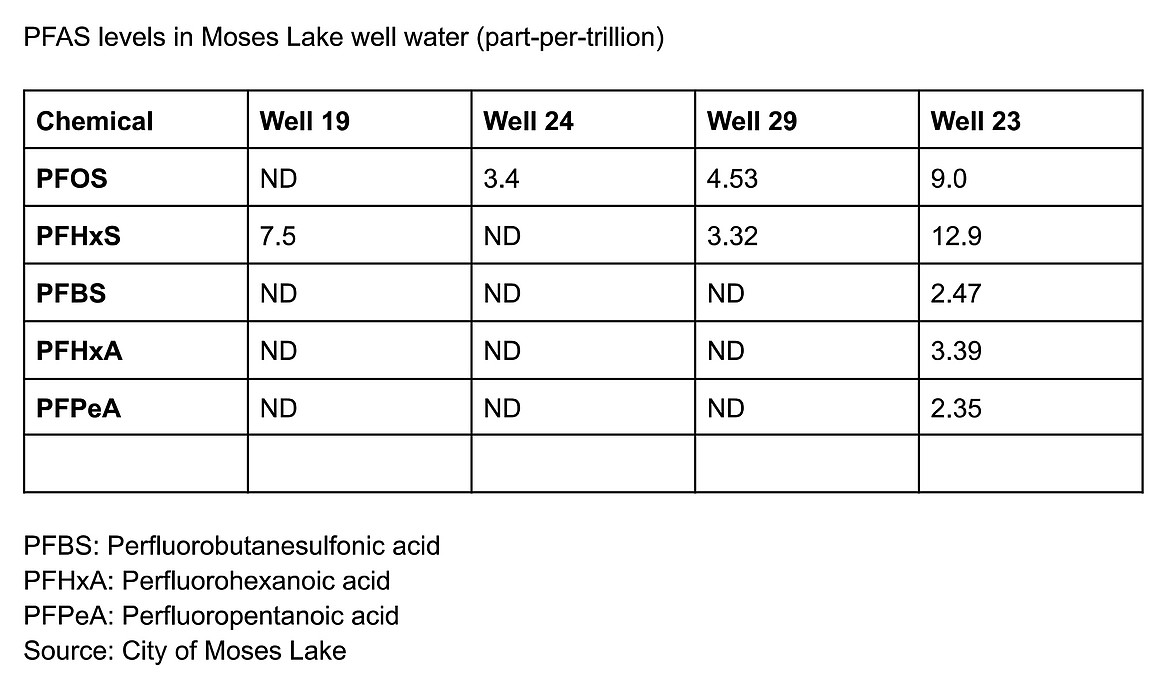Moses Lake says ‘forever chemicals’ found in 4 city wells
MOSES LAKE — The City of Moses Lake has stopped pumping water from three of its municipal drinking water wells following the discovery of per- and polyfluoroalkyl substances – known as PFAS chemicals – above Environmental Protection Agency standards that have been proposed but are not yet in place, according to Water Services Manager Chad Strevy.
Become a Subscriber!
You have read all of your free articles this month. Select a plan below to start your subscription today.
Already a subscriber? Login




